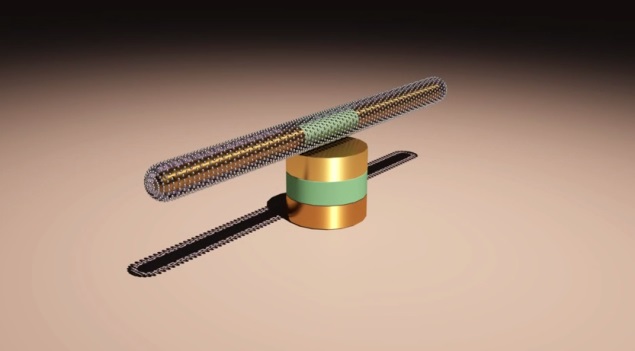- Home
- Science
- Science News
- World's Smallest and Fastest Nanomotor Presages New Era of Medicine
World's Smallest and Fastest Nanomotor Presages New Era of Medicine

With all its dimensions under one micrometre in size, the nanomotor could fit inside a human cell and is capable of rotating for 15 continuous hours at a speed of 18,000 RPMs - the speed of a motor in a jet airplane engine.
The three-part nanomotor can rapidly mix and pump biochemicals and move through liquids, which is important for future applications, test of the nanomotor in a nonbiological setting revealed.
To test its ability to release drugs, the researchers coated the nanomotor's surface with biochemicals and initiated spinning.
They found that the faster the nanomotor rotated, the faster it released the drugs.
"We were able to establish and control the molecule release rate by mechanical rotation, which means our nanomotor is the first of its kind for controlling the release of drugs from the surface of nanoparticles," said Donglei (Emma) Fan, an assistant professor at the University of Texas in the US.
"We believe it will help advance the study of drug delivery and cell-to-cell communications," Fan added.
The team built and operated the nanomotor using a patent-pending technique that Fan invented while studying at Johns Hopkins University.
The technique relies on AC and DC electric fields to assemble the nanomotor's parts one by one.
In experiments, the researchers used the technique to turn the nanomotors on and off and propel the rotation either clockwise or counterclockwise.
The study appeared in the journal Nature Communications.
Catch the latest from the Consumer Electronics Show on Gadgets 360, at our CES 2026 hub.
- Samsung Galaxy Unpacked 2025
- ChatGPT
- Redmi Note 14 Pro+
- iPhone 16
- Apple Vision Pro
- Oneplus 12
- OnePlus Nord CE 3 Lite 5G
- iPhone 13
- Xiaomi 14 Pro
- Oppo Find N3
- Tecno Spark Go (2023)
- Realme V30
- Best Phones Under 25000
- Samsung Galaxy S24 Series
- Cryptocurrency
- iQoo 12
- Samsung Galaxy S24 Ultra
- Giottus
- Samsung Galaxy Z Flip 5
- Apple 'Scary Fast'
- Housefull 5
- GoPro Hero 12 Black Review
- Invincible Season 2
- JioGlass
- HD Ready TV
- Laptop Under 50000
- Smartwatch Under 10000
- Latest Mobile Phones
- Compare Phones
- Honor Win RT
- Honor Win
- Xiaomi 17 Ultra Leica Edition
- Xiaomi 17 Ultra
- Huawei Nova 15
- Huawei Nova 15 Pro
- Huawei Nova 15 Ultra
- OnePlus 15R
- Asus ProArt P16
- MacBook Pro 14-inch (M5, 2025)
- OPPO Pad Air 5
- Huawei MatePad 11.5 (2026)
- Xiaomi Watch 5
- Huawei Watch 10th Anniversary Edition
- Acerpure Nitro Z Series 100-inch QLED TV
- Samsung 43 Inch LED Ultra HD (4K) Smart TV (UA43UE81AFULXL)
- Asus ROG Ally
- Nintendo Switch Lite
- Haier 1.6 Ton 5 Star Inverter Split AC (HSU19G-MZAID5BN-INV)
- Haier 1.6 Ton 5 Star Inverter Split AC (HSU19G-MZAIM5BN-INV)












